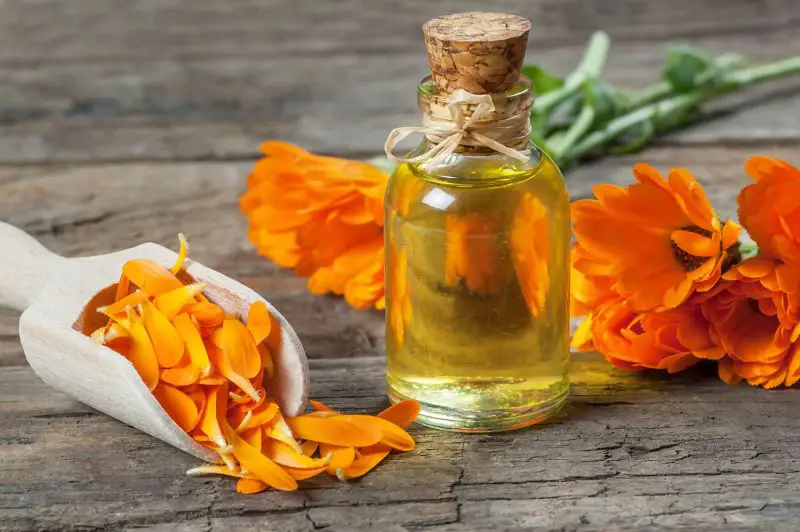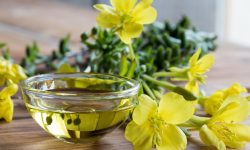Calendula, also known as pot marigold, is a versatile flower renowned for its vibrant petals and therapeutic properties. Making calendula oil at home allows gardeners and herbal enthusiasts to capture the plant’s natural healing power. This oil can be used for skin care, minor wounds, inflammation, and as a base for cosmetic or medicinal preparations. Proper extraction techniques ensure maximum potency and preserve the natural benefits of the flower.
Creating high-quality calendula oil requires careful selection of flowers, clean equipment, and precise methods. Understanding the differences between cold infusion, warm infusion, and other extraction techniques helps achieve the best results. This guide will provide detailed instructions, seasonal tips, storage practices, and practical applications. By following these steps, anyone can produce potent calendula oil for both personal use and gifting purposes.
Understanding Calendula and Its Benefits

Calendula is a flowering plant valued for centuries in herbal medicine. Its petals contain anti-inflammatory, antimicrobial, and antioxidant compounds. These properties make calendula oil ideal for soothing skin irritations, minor cuts, and rashes. Regular use supports skin healing, reduces redness, and can improve overall skin texture.
The plant thrives in sunny locations with well-drained soil, producing bright orange or yellow flowers. Optimal harvesting is crucial for oil potency, as fresh, fully open blooms contain the highest concentration of beneficial compounds. By understanding calendula’s growth cycle and chemical composition, gardeners can select the best flowers for oil preparation. Using fresh, healthy petals ensures maximum efficacy and vibrant color in the final product.
Calendula oil is versatile in its applications. Beyond skincare, it can be used in lip balms, salves, massage oils, and bath products. Its gentle yet potent nature makes it safe for adults and children when properly prepared. Knowing the plant’s benefits guides the production process and helps maintain the highest therapeutic value in homemade oils.
Harvesting and Selecting Flowers
Selecting the Best Flowers
Choosing the right calendula flowers is essential for producing potent and vibrant oil. Select fully open, bright petals, as they contain the highest concentration of active compounds such as flavonoids, carotenoids, and essential oils. Avoid petals that are wilted, damaged, or discolored, as they can reduce oil quality, color, and aroma. Early morning harvesting is recommended because petals are fresh, dry, and at their peak potency during this time.
Handle the flowers gently to prevent bruising, which can lead to oxidation and loss of therapeutic properties. Use clean scissors or garden shears to maintain hygiene and prevent contamination. Regularly inspect plants and remove any flowers affected by pests or disease before harvesting. By focusing on flower quality, gardeners ensure the raw material used for infusion is optimal, laying the foundation for high-quality, effective calendula oil.
Harvest Timing and Initial Preparation
The timing of harvest significantly impacts oil potency. Flowers should be picked before seed formation, ensuring the plant’s energy is concentrated in the petals, maximizing richness and beneficial compounds. Once harvested, sort the petals carefully, discarding any that are damaged or unhealthy to maintain oil quality.
Clean the petals gently using cold water, then allow them to dry in a shaded, well-ventilated area. Proper drying prevents mold growth and helps retain vibrant color and aroma during infusion. Following careful harvest timing and initial preparation ensures that calendula oil remains highly effective, visually appealing, and ready for either cold or warm infusion methods, providing maximum therapeutic and cosmetic benefits.
Preparing Calendula for Oil
Proper preparation of calendula flowers is essential to ensure high-quality oil. Begin by gently washing harvested petals to remove dust, dirt, or insects. Use cold water and handle petals carefully to avoid bruising. Damaged petals may oxidize quickly, affecting the oil’s color and potency.
After washing, dry petals thoroughly. Spread them on a clean, dry surface in a shaded, ventilated area. Direct sunlight can degrade delicate compounds, reducing therapeutic benefits. Allow petals to air-dry until they are slightly crisp but not brittle. Properly dried petals prevent mold growth during infusion and help maintain oil clarity.
Once petals are dry, measure the amount required for your oil batch. Choose a carrier oil such as olive, sunflower, or jojoba oil, which will extract the flower’s active compounds. The ratio of petals to oil affects both potency and color, so maintain consistency. Combining clean, dry petals with quality carrier oil ensures that the final calendula oil is vibrant, aromatic, and rich in beneficial properties, ready for infusion using either cold or warm methods.
Choosing the Right Carrier Oil
Selecting the appropriate carrier oil is crucial to producing high-quality calendula oil. The carrier oil not only extracts and preserves the active compounds from the flowers but also influences texture, absorption, and shelf life. Popular choices include olive oil, sunflower oil, and jojoba oil, each offering unique benefits. Olive oil is rich in antioxidants and provides a smooth, moisturizing base suitable for skincare applications. Sunflower oil is light and absorbs quickly, making it ideal for topical use, while jojoba oil closely resembles natural skin sebum, promoting better compatibility and hydration.
Quality and purity of the carrier oil are equally important. Opt for organic, cold-pressed oils free from chemical additives or preservatives to maintain potency and safety. Using refined or low-quality oils can reduce the effectiveness of the infusion and affect the oil’s aroma and color. Before starting the infusion, ensure all containers and utensils are sterilized to avoid contamination. The ratio of petals to carrier oil should also be considered; too little oil may lead to oxidation, while too much can dilute the active compounds, reducing therapeutic benefits.
Proper handling and storage further enhance the carrier oil’s effectiveness. Store the infused calendula oil in dark glass bottles to protect it from light, and keep it in a cool, dry place to prevent rancidity. Avoid repeated exposure to air by tightly sealing containers after each use. By carefully selecting a high-quality carrier oil and following best practices for infusion and storage, gardeners and herbalists can maximize the potency, color, and aroma of calendula oil, ensuring it delivers the full range of benefits for skincare, culinary, and medicinal applications.
Cold Infusion Method
The cold infusion method is a gentle way to extract calendula’s natural compounds while preserving its color, aroma, and therapeutic benefits. Begin by filling a clean, dry jar with dried or fresh calendula petals. Ensure petals are free from moisture and debris to prevent mold during the infusion process. Use a high-quality carrier oil such as olive, sunflower, or jojoba oil to cover the petals completely. The oil acts as a solvent, drawing out active compounds, pigments, and essential oils from the flowers without applying heat.
Seal the jar tightly and store it in a cool, dark place. Shake or stir the jar gently every day or two to encourage even infusion. Over time, the oil will take on a rich golden-orange hue and a mild floral aroma. The infusion period typically lasts two to six weeks, depending on desired potency. Patience is crucial, as longer infusion allows for a stronger concentration of beneficial compounds. Checking periodically ensures the petals remain submerged and the oil is developing properly.
Once the infusion period is complete, strain the oil through a fine mesh sieve, cheesecloth, or muslin to remove all flower material. Squeeze the petals gently to extract any remaining oil. Store the strained calendula oil in dark glass bottles to protect it from light and oxidation. Properly prepared cold-infused calendula oil retains maximum healing properties, making it ideal for skin care, massage, salves, and other herbal remedies. This method is favored for its simplicity, safety, and ability to preserve the delicate qualities of calendula petals, ensuring potent and vibrant oil suitable for multiple uses.
Warm Infusion Method
The warm infusion method accelerates the extraction of calendula’s beneficial compounds by using gentle heat. Begin by placing clean, dried petals in a heat-safe glass jar or a small saucepan. Cover the petals with a high-quality carrier oil such as olive, sunflower, or jojoba. Ensure that the petals are completely submerged to avoid mold growth and uneven infusion. Gentle heat allows the oil to penetrate the petals more efficiently, drawing out active compounds, color, and fragrance.
To maintain potency, warm the mixture slowly over low heat or a double boiler, keeping the temperature below 50°C (122°F). Avoid boiling, as high heat can degrade delicate compounds and alter the oil’s color and scent. Stir occasionally to ensure even infusion. Warm infusion typically takes four to eight hours, depending on the quantity of petals and oil. Monitor the oil closely, and remove from heat once the petals have imparted their vibrant color and aroma to the carrier oil.
After the infusion is complete, strain the oil through a fine mesh sieve, cheesecloth, or muslin to remove all flower material. Gently press the petals to extract remaining oil, ensuring maximum potency. Store the finished warm-infused calendula oil in dark glass bottles to protect against light and oxidation. Warm infusion produces a richly colored, aromatic oil suitable for skin care, salves, massage, and other herbal remedies. This method is ideal for those seeking quicker results while maintaining the natural therapeutic properties of calendula. Proper technique ensures the oil is potent, vibrant, and ready for a variety of applications.
Storage and Shelf Life
Proper Storage Techniques
Storing calendula oil correctly is essential for preserving its vibrant color, aroma, and therapeutic properties. Use dark glass bottles to block sunlight and reduce degradation from UV exposure. Ensure the bottles have tight-fitting lids to prevent air and moisture from entering, which can accelerate oxidation and spoilage. Keep the oil in a cool, dry place, away from heat sources or direct sunlight. Consistent temperature control maintains the oil’s stability, prolonging its usefulness.
For additional protection, labeling bottles with the preparation date helps track freshness. Avoid frequent opening, as air exposure diminishes potency and can introduce contaminants. Refrigeration is an option for long-term storage, especially for natural, unrefined oils. Proper storage ensures that calendula oil retains its rich golden color, floral aroma, and full range of active compounds. This makes it ideal for therapeutic, cosmetic, or culinary uses throughout the year, providing consistent quality for all applications.
Shelf Life Considerations
The longevity of calendula oil depends on the carrier oil and storage conditions. Oils like olive, jojoba, or sunflower provide a stable base, allowing the infused oil to remain effective for up to one year. Monitor the oil regularly for changes in color, consistency, or odor, as these may indicate spoilage. Discard any oil that develops an off smell, cloudiness, or unusual texture to ensure safety and effectiveness.
Making smaller batches can help maintain potency and reduce the risk of degradation over time. Properly stored calendula oil preserves its anti-inflammatory, antimicrobial, and antioxidant properties, keeping it safe for skin, massage, or medicinal uses. By following careful storage practices, gardeners and herbal enthusiasts can ensure their homemade oil remains vibrant, aromatic, and potent, ready for regular application or gifting purposes.
Applications and Uses
Skincare and Healing Applications
Calendula oil is highly valued for its skin-soothing and healing properties. It can be applied directly to minor cuts, scrapes, insect bites, and irritated skin to reduce inflammation and promote faster healing. Its anti-inflammatory and antimicrobial compounds help prevent infection and relieve redness or discomfort. Incorporating calendula oil into daily skincare routines can improve skin texture, reduce dryness, and maintain hydration naturally.
The oil can also serve as a base for creating salves, balms, or lotions. Combining calendula oil with other natural ingredients like beeswax or shea butter enhances its therapeutic benefits. Regular use supports skin resilience and provides gentle care for sensitive or damaged skin. By understanding proper application methods, gardeners and herbal enthusiasts can maximize the benefits of homemade calendula oil for both first aid and cosmetic purposes.
Culinary and Cosmetic Uses
Calendula oil is also versatile in culinary and cosmetic applications. In the kitchen, it can be infused into dishes to add vibrant color, mild flavor, and beneficial compounds. It pairs well with salads, soups, or baked goods, offering a gentle, edible enhancement. Using organically grown, pesticide-free petals ensures safety and maintains the oil’s potency and aroma.
In cosmetics, calendula oil is commonly incorporated into massage oils, hair treatments, bath blends, and skin-care products. Its soothing and nourishing qualities enhance both skin and hair health while providing a natural, floral scent. Properly prepared oil retains its color, aroma, and therapeutic properties, making it suitable for multiple uses. Creative application of calendula oil allows users to enjoy its healing, aesthetic, and sensory benefits year-round.
Safety Considerations
While calendula oil is generally safe for topical and culinary use, certain precautions should be observed to prevent adverse reactions. Some individuals may have skin sensitivities or allergies to calendula, which can result in redness, itching, or irritation. Conducting a patch test on a small area of skin before widespread application is essential. Apply a small amount to the inner forearm and observe for 24 hours. Discontinue use immediately if any signs of reaction appear.
Pregnant and breastfeeding women should consult a healthcare professional before using calendula oil, especially for therapeutic purposes. Certain compounds in the flowers can potentially interact with medications or affect hormone-sensitive conditions. Additionally, avoid applying the oil to broken or highly inflamed skin unless advised by a professional. Children should also be monitored carefully when using calendula oil, and dosages or application areas should be adjusted accordingly to ensure safety.
Proper preparation and storage are also critical for safety. Use clean, sterilized tools and containers during infusion to prevent contamination. Ensure petals are pesticide-free and thoroughly inspected for disease or pests. Water should never be added to stored oil, as it can promote microbial growth and spoilage. Dark glass containers, kept in cool, dry, and dark conditions, help maintain potency while reducing the risk of oxidation or degradation. Observing these safety measures ensures that calendula oil remains both effective and safe for skincare, medicinal, and culinary applications.
Maximizing Potency
To achieve the maximum benefits from calendula oil, start by selecting the highest quality flowers. Choose fully open, vibrant petals harvested at peak bloom, avoiding wilted or damaged blooms. The concentration of active compounds, including flavonoids, carotenoids, and essential oils, is highest at this stage. Handling petals gently during harvest and preparation prevents bruising and oxidation, which can reduce the oil’s therapeutic effectiveness and color intensity.
The infusion method also plays a critical role in potency. Cold infusion preserves delicate compounds by slowly extracting oils without heat, maintaining the natural aroma, color, and bioactive properties. Warm infusion offers a faster extraction, but temperature should be carefully controlled to avoid breaking down sensitive compounds. Using high-quality carrier oils like olive, sunflower, or jojoba ensures that the extracted properties are effectively retained and evenly distributed. Properly prepared oil will have a deep golden color, a pleasant scent, and potent therapeutic qualities suitable for skincare, culinary, and cosmetic applications.
Storage and handling after infusion are equally important. Use dark glass containers to protect oil from light and heat, which can accelerate oxidation. Keep containers in a cool, dry place and avoid frequent opening, which introduces air and reduces shelf life. Label each batch with the preparation date and use it within one year for optimal results. By following careful harvesting, controlled infusion, and proper storage, gardeners and herbal enthusiasts can ensure their calendula oil remains highly potent, visually appealing, and therapeutically effective.
Troubleshooting Common Issues
Preventing Mold and Cloudiness
One of the most common issues when making calendula oil is mold growth or cloudy appearance. Mold often develops if petals are not fully dry before infusion or if water contaminates the oil. To prevent this, ensure flowers are completely moisture-free by drying them in a shaded, well-ventilated area. Use clean, sterilized tools and containers to minimize contamination during preparation.
Cloudiness can also occur when oil is exposed to high heat or if petals release tiny particles. Strain the oil carefully using fine mesh or cheesecloth, removing all solid matter. Store the finished oil in dark glass containers, away from heat and sunlight. Proper preparation and storage reduce the risk of mold or cloudiness, preserving the oil’s potency, aroma, and color for skincare, cosmetic, or culinary uses.
Correcting Loss of Color and Aroma
Calendula oil may lose its vibrant color or aromatic properties if exposed to excessive heat, light, or air during infusion or storage. Using gentle infusion techniques helps maintain natural carotenoids and essential oils, keeping the color rich and the aroma fresh. Cold infusion is especially effective for retaining delicate compounds.
If color or aroma diminishes after storage, consider shorter infusion times or switching to a carrier oil with better preservative qualities. Ensure airtight containers to limit oxidation, and always label with the preparation date. Following these practices ensures calendula oil remains visually appealing, therapeutically potent, and safe for use, allowing gardeners and herbalists to enjoy consistent quality across multiple batches.
Enhancing Therapeutic Benefits
Maximizing the therapeutic potential of calendula oil begins with careful flower selection. Choose fully open, vibrant petals that are free from chemicals or pesticides. The concentration of beneficial compounds, including flavonoids, carotenoids, and essential oils, is highest at peak bloom. Harvest gently to avoid bruising, which can degrade potency, and handle petals with clean, sterilized tools to maintain oil quality.
Infusion methods also significantly impact therapeutic effectiveness. Cold infusion allows slow extraction of delicate compounds without heat damage, preserving natural color, aroma, and anti-inflammatory properties. Extending the infusion period enhances flavonoid and carotenoid content, making the oil more potent. Warm infusion offers faster results but requires precise temperature control to prevent breaking down sensitive compounds. Choosing the method according to your intended use ensures maximum efficacy for skin, hair, or medicinal applications.
Supplementing the oil after infusion can further enhance benefits. Adding gentle essential oils like lavender, chamomile, or rosemary increases soothing, calming, and antimicrobial properties. Combining careful harvesting, optimal infusion, and post-infusion enhancement techniques produces calendula oil with vibrant color, rich aroma, and highly effective therapeutic qualities. This approach ensures the oil remains a valuable natural remedy for skincare, wellness, and home-based remedies.
Using Calendula Oil in Daily Life
Once high-quality calendula oil is prepared, correct application maximizes its benefits. For skincare, apply directly to irritated, dry, or inflamed areas to soothe and nourish. The oil absorbs easily, helping reduce redness, inflammation, and minor skin discomfort. For hair, it can be massaged into the scalp to promote hydration and maintain healthy follicles while providing gentle antibacterial properties.
Calendula oil is versatile in culinary uses as well. It can be incorporated into teas, salad dressings, or infused into dishes to add subtle color and benefit from natural anti-inflammatory and antioxidant compounds. Understanding proper usage and dosage ensures safety and effectiveness, particularly when used on children or sensitive skin. Always follow recommended guidelines to prevent irritation or allergic reactions.
Additionally, calendula oil can be combined with other natural remedies or skincare products to enhance effectiveness. Blending with shea butter, coconut oil, or other carrier oils creates a richer, more moisturizing product. Regular use, careful storage, and mindful application guarantee that each drop maintains its color, aroma, and therapeutic potency. This makes calendula oil a versatile and effective solution for home-based wellness, beauty, and culinary purposes.
FAQ About How to Make Calendula Oil
How do I know if calendula oil is safe for my skin?
Although calendula oil is generally gentle, some individuals may experience allergic reactions. Conduct a patch test by applying a small amount on the inner forearm and observing for 24 hours. Avoid use if redness, itching, or irritation occurs. Always consult a professional for sensitive or broken skin.
Can I use dried calendula flowers for oil infusion?
Yes, dried flowers can be used, but fresh petals typically provide higher potency. Ensure dried petals are fully moisture-free to prevent mold. Properly stored dried petals maintain color, aroma, and therapeutic compounds. Using high-quality dried flowers yields effective oil suitable for skincare, cosmetic, and culinary applications.
What is the best carrier oil for calendula infusion?
Olive, sunflower, and jojoba oils are ideal carriers. They preserve the natural properties of calendula while providing a stable medium for infusion. Choose organic, cold-pressed oils for maximum potency. The carrier oil supports therapeutic effects, retains aroma, and ensures smooth texture suitable for topical, cosmetic, and edible applications.
How long does homemade calendula oil last?
Properly stored calendula oil typically lasts up to one year. Keep it in dark glass containers in a cool, dry, and dark place. Avoid frequent opening to minimize oxidation. Using clean tools and pesticide-free petals ensures oil maintains its color, aroma, and therapeutic properties throughout its shelf life.
Should pregnant or breastfeeding women use calendula oil?
Pregnant and breastfeeding women should consult a healthcare professional before using calendula oil. Certain compounds may interact with hormones or medications. Topical or internal use should be monitored carefully. Conduct a patch test first and avoid broken or highly sensitive skin until professional advice is obtained to ensure safety for both mother and child.
Conclusion
Calendula oil is a versatile and potent natural remedy when prepared carefully. By selecting vibrant flowers, using proper infusion techniques, and storing the oil correctly, you preserve its therapeutic properties, color, and aroma. Attention to safety and quality ensures maximum effectiveness for skincare, culinary, and cosmetic uses. With consistent care and proper methods, anyone can create high-quality calendula oil that delivers lasting benefits, making it a valuable addition to home remedies and daily wellness routines.






